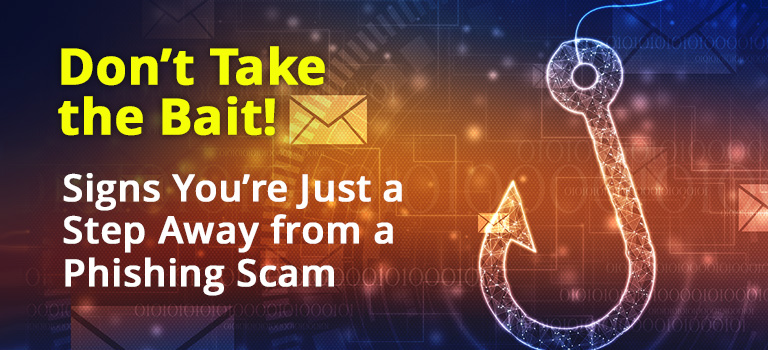Phishing is one of the most significant threats in the modern cyber threat landscape. While this threat has been around for a considerable time, it continues to wreak havoc. In 2022 alone, there were more than 500 million phishing scams reported. As part of social engineering tactics, phishing attacks happen in various ways, amongst which the most common method is fraudulent emails. As per June 2023 statistics, more than 3.4 billion fraudulent emails are being dispatched across the globe daily. Amidst this, as phishing scams continue to rise and remain a significant part of the cyber threat landscape, gaining sufficient insights into them and learning practical methods to mitigate them is crucial.
Understanding Phishing: A Closer Look
Phishing is a deceptive practice used by cybercriminals to trick individuals into revealing sensitive information. It’s crucial to be aware of its dangers.
Phishing scams rely on psychological tactics such as urgency and fear to manipulate their targets. When rushed or experiencing heightened emotions, people are more susceptible to falling for these scams, overlooking warning signs, and making impulsive decisions.
The financial impact of phishing is substantial. Reportedly, 3.6 million adults have fallen victim to these scams, enduring significant monetary losses. The stakes are undeniably high, with an average dollar loss per incident reaching $886.
Beyond financial losses, phishing attacks erode trust in online platforms and increase vulnerability to identity theft. Victims often become reluctant to engage in online activities or e-commerce, limiting their digital participation.
We must educate ourselves about phishing indicators and tactics. By staying vigilant and implementing safeguards, we can mitigate the risks associated with phishing scams. Awareness is vital in safeguarding our personal and financial information.
Signs You’re Just a Step Away from a Phishing Scam
Phishing scams are becoming more advanced, making it crucial to recognize the signs and protect yourself from online fraud. Here are some signs that you are being targeted and tips on how to battle against them:
- Be cautious if an email asks for personal or financial information. Legitimate organizations rarely request sensitive information via email.
- Watch out for urgent or alarming subject lines. Phishers often use psychological tactics to prompt quick responses.
- Pay attention to unfamiliar or suspicious sender addresses, as scammers may try to mimic trusted organizations.
- Phishers create fake URLs that resemble legitimate ones. To verify a website’s authenticity, hover over links to reveal their true destination. Look for misspellings or variations in domain names that could indicate a fraudulent website.
- Always check if the website’s URL starts with “https” instead of “http” when entering sensitive information, as the “s” signifies a secure connection.
- Phishing emails often contain errors intentionally included to filter out cautious recipients. Poorly written content, grammatical errors, or unprofessional language can indicate fraudulent activity.
- Stay skeptical of emails that deviate from the professional tone used by legitimate organizations.
Boosting Your Online Security: Essential Steps for a Safer Digital Experience
Living in the digital age, protecting yourself from online threats is crucial. Following these data-backed practices can significantly reduce the risk of falling victim to phishing scams and online fraud.
- Protect your online security with a password manager. It generates and stores strong, unique passwords for each account. It significantly reduces password theft hence the likelihood of successful brute-force attacks.
- Add Two-Factor Authentication (2FA) for an extra layer of security. 2FA blocks most automated bot attacks and bulk phishing attempts.
- Utilize a VPN (Virtual Private Network). A VPN encrypts your internet traffic, protecting it from interception and ensuring privacy. Especially when using public Wi-Fi networks, VPNs shield your data from malicious actors. They create a secure tunnel that keeps your online activities hidden.
- Be cautious of sharing personal information online. The more you divulge sensitive details, the greater your vulnerability to identity theft and insidious phishing attacks.
- Avoid using public Wi-Fi for sensitive transactions. Remember, hackers can intercept your data. Using secure websites with encrypted connections also reduces the risk of data interception and manipulation.
- Regularly update and secure your devices and software. Outdated software and unpatched vulnerabilities are common targets for cyber-attacks.
- Use reputable antivirus and anti-malware software. These tools detect and block online threats, including phishing attempts and malicious downloads.
- Educate yourself about phishing techniques. Stay informed about the latest phishing techniques and tactics. Awareness of common signs and red flags helps you recognize and avoid phishing scams.
- Exercise caution with email attachments and links. Malicious attachments in phishing emails are a primary source of malware infections. Verify the authenticity of links before clicking, and only open attachments from trusted sources.
By recognizing the signs of phishing scams and implementing effective strategies, you create a stronger defense against online fraud. Take control of your online security, stay informed, and join the effort to create a safer digital environment for everyone.
Shigraf Aijaz
Tags: Cyber-Attacks, Phishing, Phishing Scams


